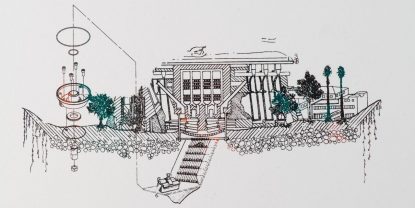Think Box
Amir-Nasr Kamgooyan
December 06 — December 25, 2019
Imagination comes about in absence. “Think Box” is an objective form of imagination and a state of unity between contrary forms in a universe that “un-defines” the boundaries between existence and non-existence, the organic and the inorganic, dream and wakefulness, memory and oblivion. By carefully examining the surroundings and various tools and plants, Amir-Nasr Kamgooyan depicts a cohesive whole, which seems to be coincidental at the same time. He places mechanical humans in a host of plants, birds, mechanical parts, tools, and all kinds of micro- and microorganisms, with a meticulous asymmetry. Presented in various forms and styles, these handmade prints are visual studies of the humanness of people as organic beings, in relation to machines as inorganic creatures. In the meantime, a creature is born with both human and mechanical characteristics: it has natural and artificial organs simultaneously.
In the “Think Box” exhibition, Kamgooyan presents a new series of drawings that are made of the details of his earlier works, albeit with a new layering and articulation, constituting a different kind of imagery in which each individual part assumes its meaning in relation to the whole. The beings and creatures of the show are depicted in a number of ways: there are light portable cardboard boxes, assembled like volatile, pliable thoughts, made of multiple layers of creatures, plants, mechanical parts, and various tools, creating the possibility of multiple viewing angles. These volumes bring the gap between the conscious and the subconscious to a minimum, forming a new narrative method in Amir-Nasr’s works. On the other hand, the juxtaposition of contrary, yet homogeneous, creatures, generally modeled after scientific drawings of old books appear in different compositions with new outlining of the frames. What is also new in these works is the artist’s use of color.
Displaying a video alongside the installations of “Think Box” series indicates another possibility, namely moving pictures, depicting a state of oblivion and unconsciousness, similar to the sleeping people of the prints. In a similar vein to his earlier works, Amir-Nasr is treading on a timeless path: it bears to trace of the present, and it belong neither to the past nor to the future.
